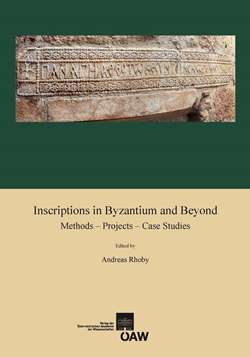Andreas Rhoby. Inscriptions in Byzantium and Beyond. Methods – Projects – Case Studies. Vienna, Verlag der Österreichischen Akademie der Wissenschaften, 2015.
From Verlag der Österreichischen Akademie der Wissenschaften
The present book, the first collective volume entirely devoted to aspects of Byzantine epigraphy, mainly comprises papers delivered at two international meetings (Vienna 2010, Sofia 2011). The book is divided into four sections and includes among others the following contributions: after an introductory article about the “history” of the discipline of Byzantine epigraphy Cyril Mango tries to define the term “Byzantine inscription” and its limits. Vincent Debiais offers some interesting observations by comparing medieval Latin inscriptions from the West with Byzantine epigraphic traditions. The second section of the book bears the title “Methods of Editing Byzantine Inscriptions”: while the paper of Peter Schreiner discusses the urgent necessity of creating a new epigraphic initiative within Byzantine Studies, Walter Koch describes the Western medieval inscription projects in detail. Both Guglielmo Cavallo and Erkki Sironen discuss editorial guidelines while Charlotte Roueché stresses the advantages of creating online-corpora, and Joel Kalvesmaki describes his recently published epigraphic font “Athena Ruby”. The third section covers articles which report current epigraphic projects: two projects from Greece presented will be published within databases. Maria Xenaki discusses the epigraphic wealth of Cappadocia and its hardly studied graffiti. The last section is devoted to case studies articles. Their content ranges from Late Antiquity (Sencer Şahin, Mustafa Sayar) until the middle and the late Byzantine period (Ida Toth, Linda Safran).
Open Access

